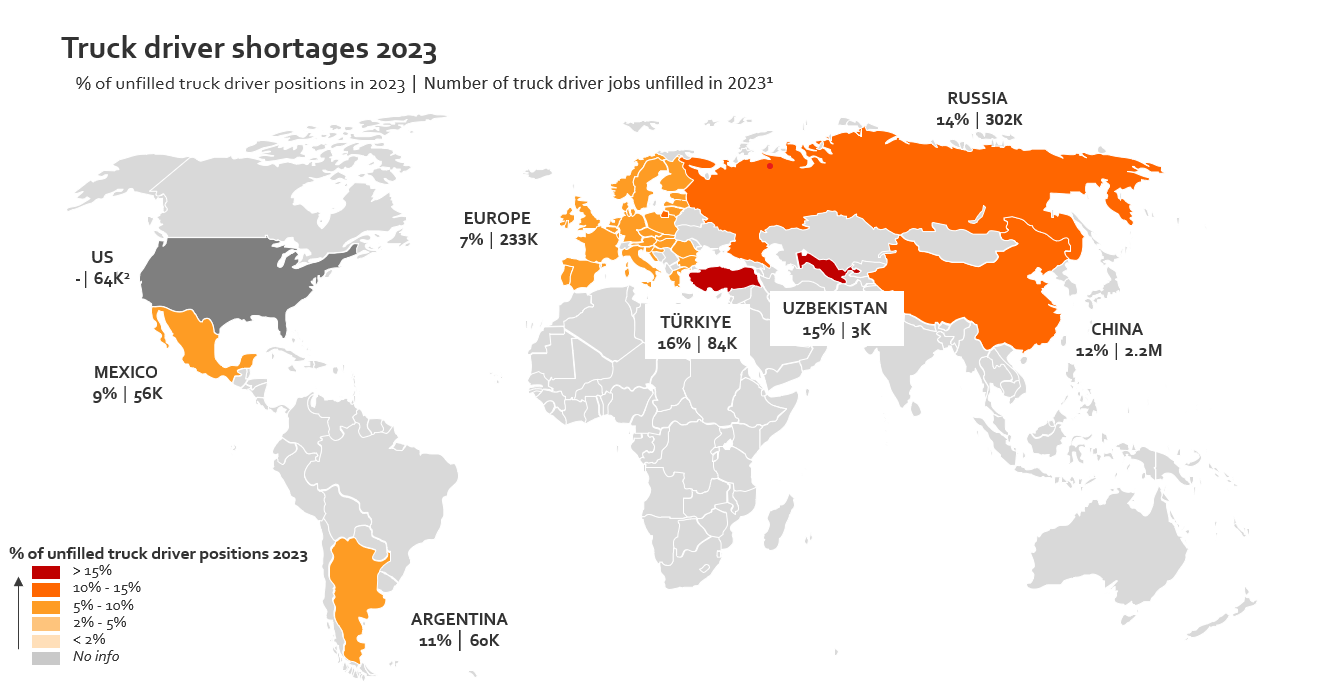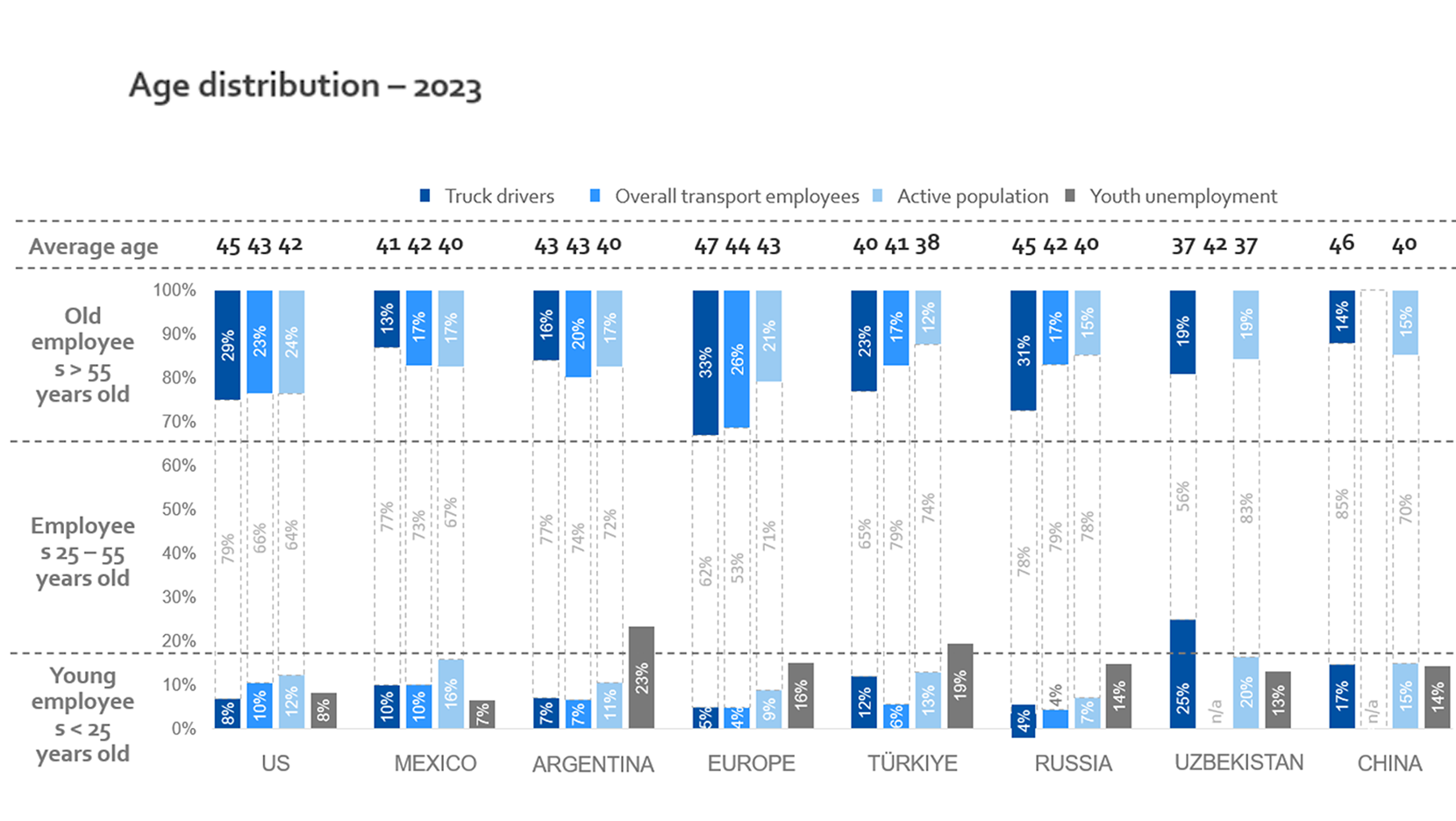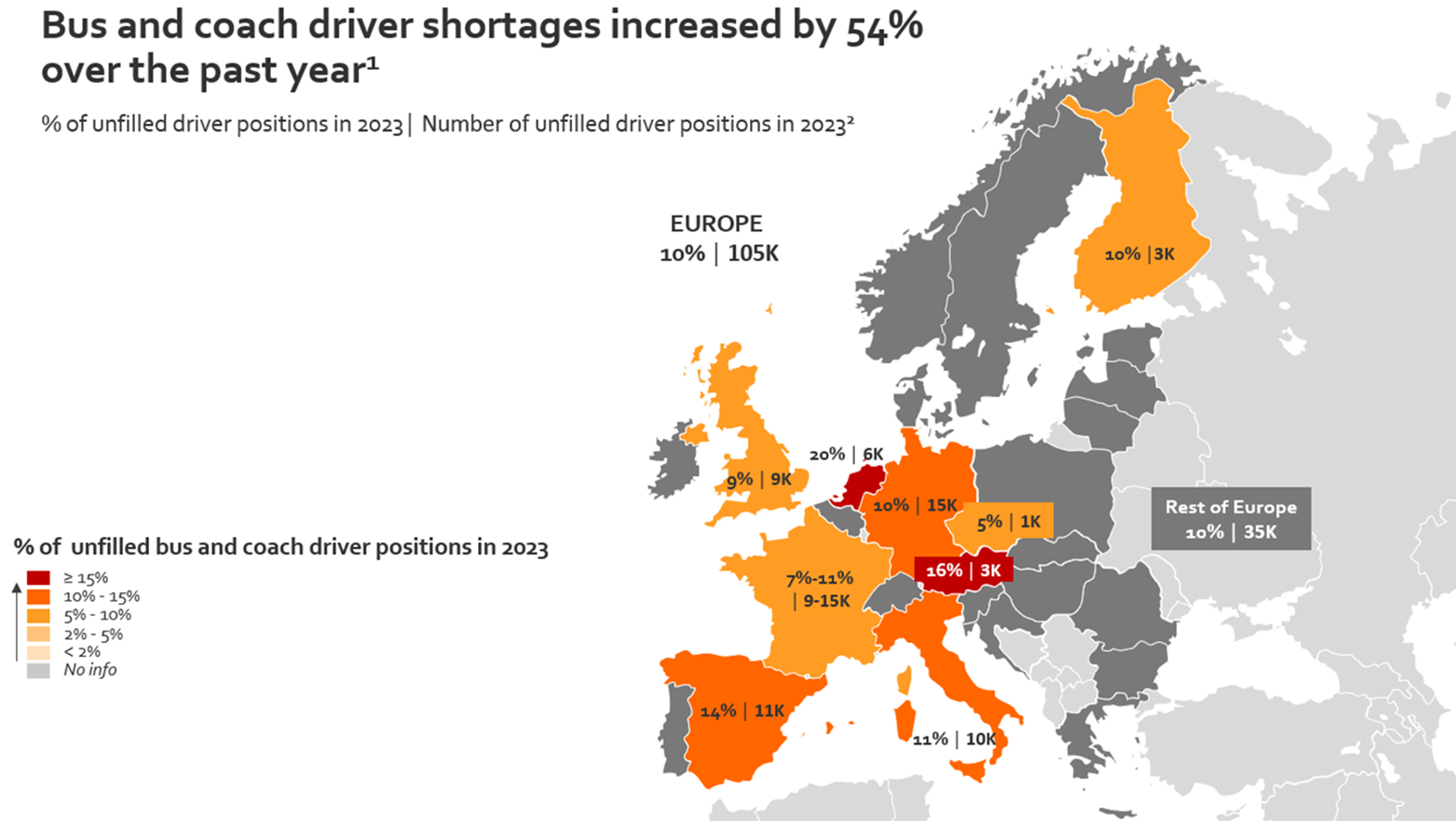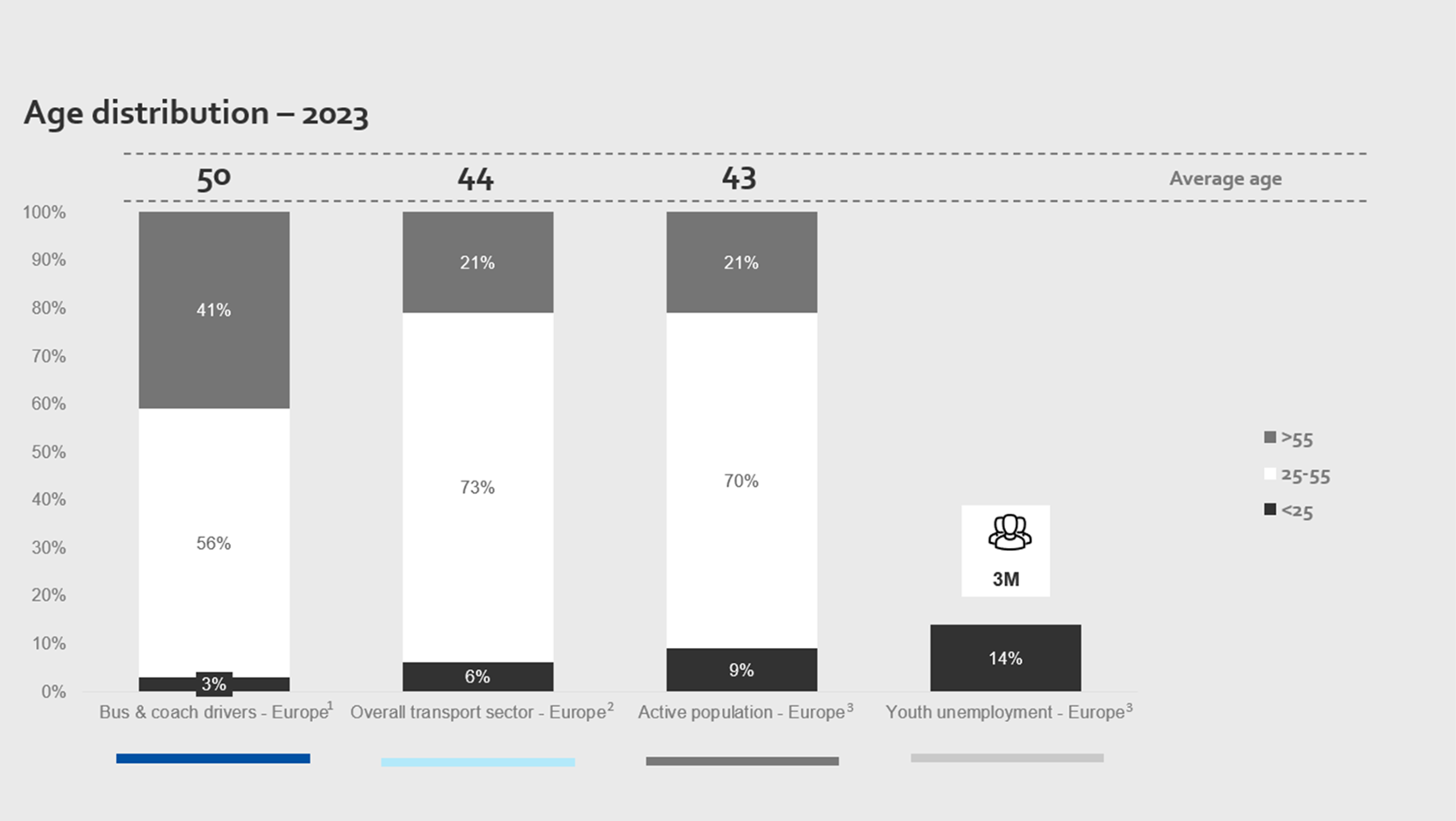In 2023, IRU, backed with on-the-ground information from its members, continued to report and analyse global driver shortages: a chronic issue threatening mobility networks and supply chains. This article offers an overview of some of IRU’s efforts to analyse the situation, raise awareness and advance solutions.
For several years now, IRU has been publishing its global report on driver shortages.
In 2023, IRU’s report found that truck driver shortages have increased globally, with over three million unfilled truck driver jobs, or 7% of total positions, in 36 countries studied, representing 72% of global GDP.
Two exceptions were Europe and the United States, where shortages eased slightly in 2023 due to softer transport demand as a result of inflation and tighter monetary policy limiting consumption and investment.

The shortage is forecast to get much worse in the coming years. Without action to attract and retain drivers, over 7 million truck driver positions could be unfilled by 2028 in the surveyed countries, including 4.9 million in China (20% of total positions), 745,000 in Europe (17% of total positions), and 200,000 in Türkiye (28% of total positions).
The truck driver profession has an ageing population: less than 12% of truck drivers are below 25 years old, falling to 5% in Europe, except for China (17%) and Uzbekistan (25%).

The share of women truck drivers also continues to remain low at only 6% or less in the countries studied, below the overall transport industry. China (6%) and the United States (8%) were found to have the highest share of women truck drivers.
Commenting on the significance of the findings, IRU Secretary General Umberto de Pretto said, “We cannot allow driver shortages to get any worse. Operators are doing their part, but governments and authorities need to increase efforts to improve working conditions and access to the profession.”
At least 50% of road transport operators have serious problems hiring skilled drivers, in most countries studied. Many are also unable to expand their business and are losing existing clients and revenues.
Passenger transport
On the passenger side, IRU’s 2023 European bus and coach driver shortage report showed that unfilled positions are on the rise in Europe.
There are now 105,000 unfilled positions in Europe, 10% of the total professional driver population. This is an increase of 54% since 2022, impacting services for millions of users.

The bus and coach sector’s post-COVID growth has increased demand for drivers and over 80% of operators are facing severe, or very severe, difficulties filling positions.
But the shortage is forecast to get worse, more than doubling by 2028.
Only 16% of bus and coach drivers are women, below both the overall transport industry (22%) and working population (46%) average. The profession also has an ageing population. Less than 3% of bus and coach drivers in Europe are below 25 years old, while more than 40% are over 55.

Over 330,000 bus and coach drivers are set to retire in the next five to ten years, while the rate of newcomers is significantly lower.
Without action to attract and retain drivers, Europe could have more than 275,000 unfilled bus and coach driver positions by 2028.
Busworld Europe
The release of IRU’s bus and coach driver shortage coincided with Busworld Europe in Brussels, Belgium, where IRU hosted an interactive roundtable on driver shortages.
Moderated by Anna Grönlund, Deputy Managing Director of the Swedish Bus and Coach Federation, and Vice President of IRU’s Passenger Transport Council, the roundtable featured Elzbieta Lukaniuk (Responsible for land transport and road safety, Cabinet of Transport Commissioner Adina Vălean), Federico Baiocco (Head of Logistics, Iveco Group), István Ujhelyi (MEP), Yi Lifeng (CEO, Hiseas CoWin Company), and Raluca Marian (Director of EU Advocacy, IRU).
IRU first presented its latest figures on Europe’s bus and coach driver shortage, before Anna Grönlund facilitated an exchange on the scope of the challenge and solutions among vehicle manufacturers, EU institutions, representatives of transport operators and travel service organisers.
What’s working?
Following the release of the 2023 driver shortage reports, IRU also organised two online webinars to explore some of the solutions.
In the first webinar, “What’s working? Attracting more women and young people to trucking”, IRU was joined by three speakers, including two passionate female truck drivers from Europe and the United States, Iwona Blecharczyk (Polish truck driver, operator and industry advocate) and Rhonda Hartman (Old Dominion Freight Lines, America's Road Team Captain – ATA), as well as Marco Henry, SVP of Global Ground and Rail Procurement at CEVA Logistics.
With the rate of women truck drivers being less than 6% globally, with the United States being an exception at 8%, and only 4 to 12% of drivers being under 25, the speakers shared their best practices and insights for attracting more young people and women to the truck driver profession.
View the webinar presentation and watch the full replay for on-the-ground insights on how to attract more drivers.
What about innovation?
One reason why there is a driver shortage is because the life of a truck driver can be difficult, with long hours, including long waiting times at borders, challenging loading and unloading responsibilities, inadequate facilities, and many diverse tasks.
Innovation can ease some of the challenges and make the profession more enjoyable, fulfilling and attractive.
In a second webinar, our guest speakers unpacked how technology, new driver apps and innovative processes are helping to better attract and retain truck drivers.
The speakers included Adrián Valverde (R&D & ESG Manager, PrimaFrio), Clément Faure (Head of Marketing, Truckfly by Michelin), Damian Penney (Vice President EMEA, Lytx), Elisabet Broms (Research manager, Cab development, SCANIA), and Thomas Larrieu (CEO, Upply).
View the webinar presentation and watch the full replay for insights on how innovation is helping to attract and retain drivers.
Register here to be notified of our upcoming 2024 driver shortage webinars and analysis.
